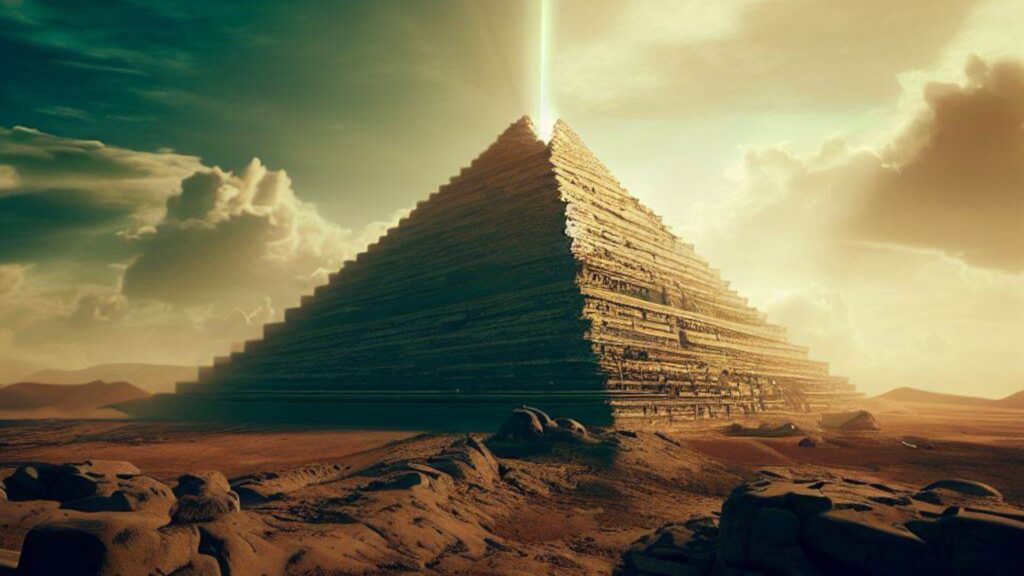Understanding the Great Pyramid: The Mystery Unfolds
The Great Pyramid Wasn’t For The Pharaohs. This statement alone challenges conventional wisdom. But what if it’s true? Could an ancient advanced civilization have been the creators?
The Marvel of Ancient Engineering
The statement that The Great Pyramid Wasn’t For The Pharaohs is not a new claim, but it has been gaining traction. So, what’s the driving force behind this statement, and what evidence supports it? Let’s explore the intricate details of the Great Pyramid’s engineering.
First and foremost, the alignment of the Great Pyramid with celestial bodies is nothing short of awe-inspiring. It’s aligned with true north within an astonishing 3/60th of a degree, a precision that raises eyebrows. How could such precision be achieved without the help of modern tools, and what does this mean for our understanding of ancient civilizations?

The interior design of the Great Pyramid is equally compelling. Its chambers align with specific stars, something that would require knowledge and technology far beyond what we know of the ancient Egyptians. This intricate design work leads us to question who was capable of such feats.
Furthermore, the Pyramid’s slopes are encoded with the Golden Ratio, a mathematical concept that has baffled mathematicians for centuries. Could the ancient Egyptians have understood this ratio, or does it hint at a more advanced civilization at play?
The construction methods of the Great Pyramid are still a topic of debate. The sheer size and weight of the blocks, coupled with their precise placement, suggest techniques that are lost to history. How were these blocks moved and placed with such precision, and what does it say about the skills and knowledge of the builders?
In conclusion, the evidence increasingly supports the notion that The Great Pyramid Wasn’t For The Pharaohs. Instead, it represents a marvel of ancient engineering that transcends what we thought possible for its time.
The intricate design, precise alignments, and baffling construction methods point to a civilization far more advanced than previously believed. This revelation opens the door to a new understanding of our past and invites us to reconsider what we know about the Great Pyramid and the civilization that created it.
For those eager to explore further into the notion that ancient civilizations were technologically advanced, our in-depth article on Ancient Advanced Civilizations: Technology Unveiling the Mysteries of the Past offers a detailed investigation into the evidence and theories supporting this fascinating perspective.
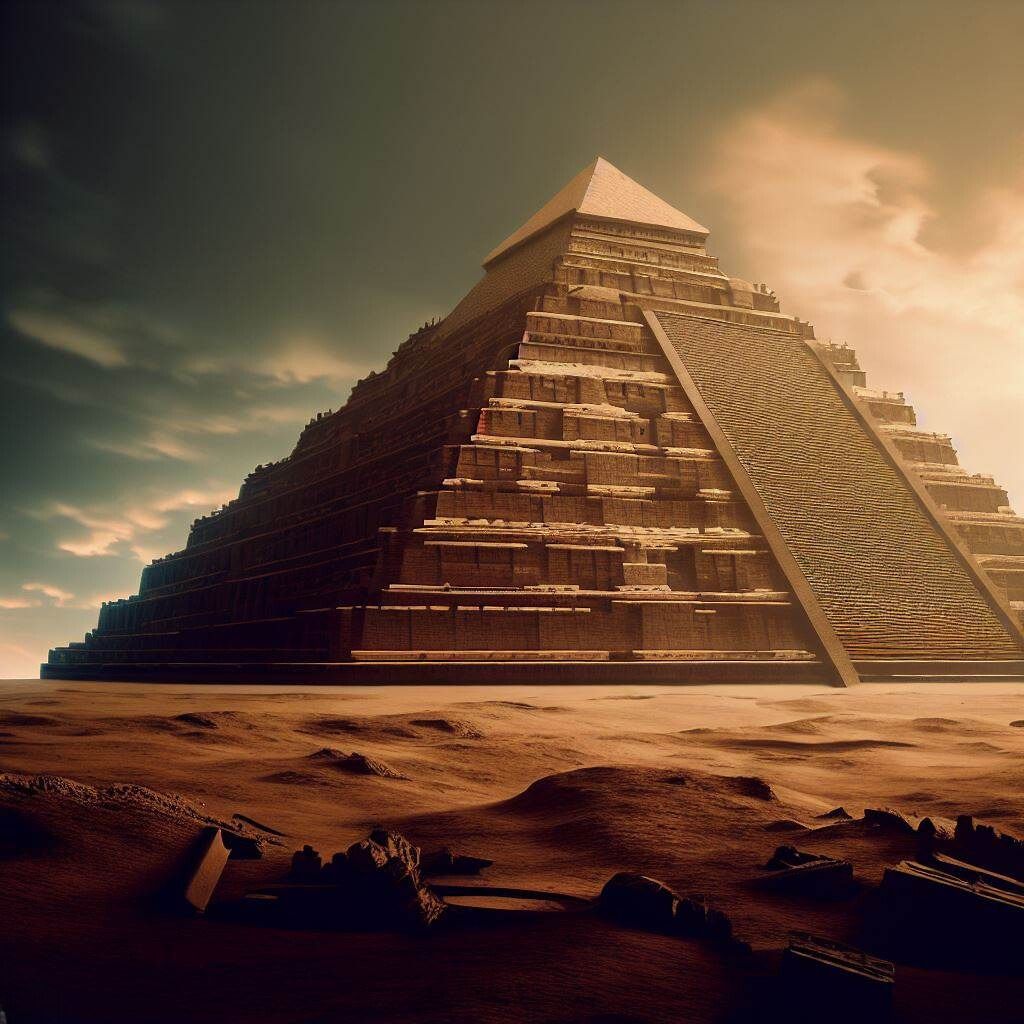
A Brief History of the Pharaohs’ Connection
When considering why The Great Pyramid Wasn’t For The Pharaohs, it’s essential to take a closer look at the Pharaohs’ historical connection with the pyramids.
For centuries, the Great Pyramid of Giza has been linked to the Pharaoh Khufu, also known as Cheops, who ruled during the Fourth Dynasty of ancient Egypt. The claim is rooted in the writings of ancient historians like Herodotus, who connected the Pharaohs to the construction of these immense structures.
But does this connection hold up under scrutiny?
The truth is evidence directly linking the Pharaohs to the pyramids is scarce and often circumstantial. While there are inscriptions and documents mentioning the Pharaohs’ involvement in building other structures, the evidence for the Great Pyramid is less definitive.
Some theories suggest that the Pyramid was not a tomb for a Pharaoh but a structure with a more profound purpose. The lack of substantial findings, such as mummies or royal treasures, within the Pyramid raises questions. Could it be that the Pyramid was intended for something else entirely?

Further examination of the Pyramid’s construction methods and design reveals a complexity that may exceed the known capabilities of the Pharaohs’ civilization. From the precise alignment with celestial bodies to the incorporation of advanced mathematical concepts, these features hint at a knowledge far beyond what was typical for the era of the Pharaohs.
Even the dating of the Great Pyramid poses challenges. Radiocarbon dating has provided conflicting results, leading some researchers to question whether the timeline associated with the Pharaohs aligns with the actual construction date. Could it be that the Great Pyramid predates the Pharaohs, and its association with them is merely a historical misunderstanding?
In conclusion, while the Pharaohs’ connection to the Great Pyramid has been a long-standing belief, evidence increasingly casts doubt on this association. The complexity of the Pyramid’s design, the lack of direct evidence linking the Pharaohs, and the questions surrounding the Pyramid’s dating all suggest that The Great Pyramid Wasn’t For The Pharaohs.
Instead, it points to the existence of an advanced ancient civilization with a knowledge and understanding that may have far exceeded that of the Pharaohs’ time. This fascinating perspective invites us to reconsider historical narratives and explore new possibilities about our past.
Why The Great Pyramid Wasn’t For The Pharaohs: The Evidence
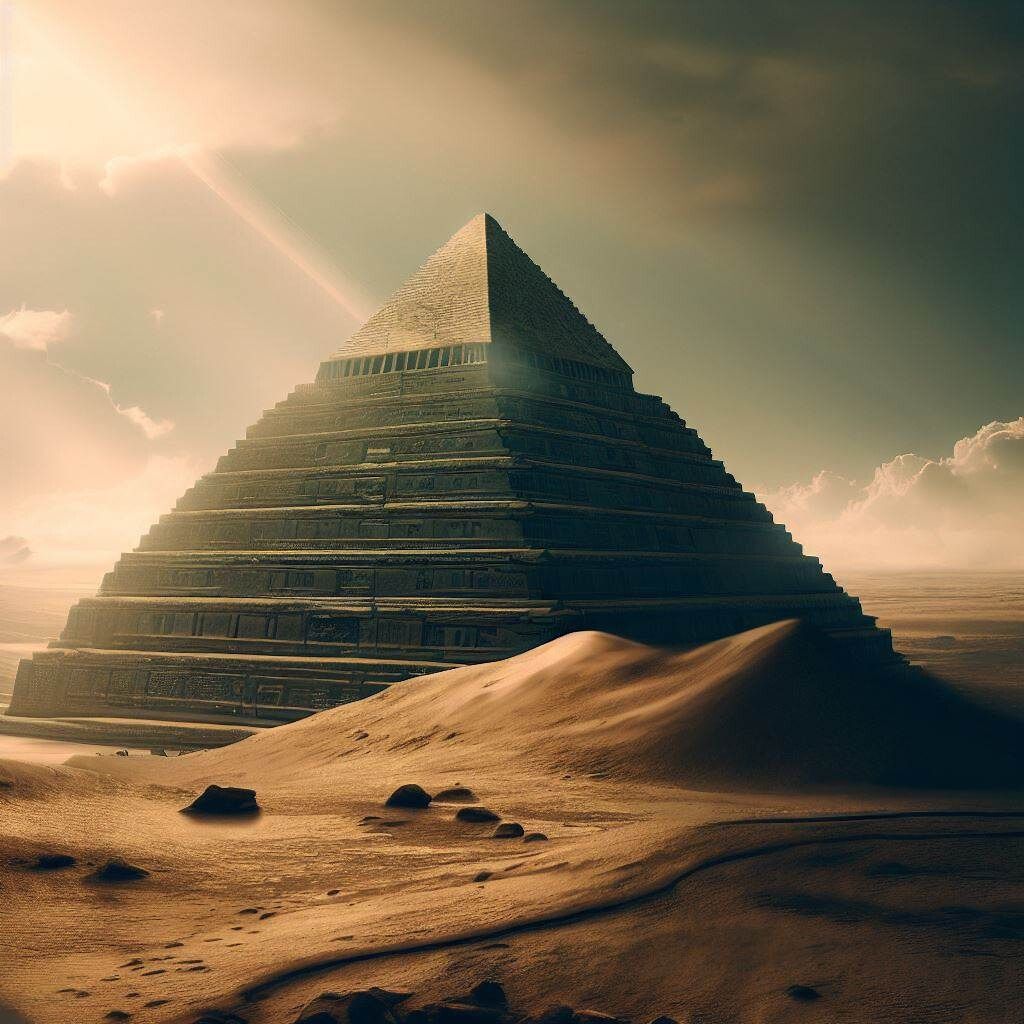
The Absence of Mummies
No mummies were found within. Unlike other Egyptian tombs. Could it be evidence of an alternative purpose?
One of the most compelling pieces of evidence supporting the idea that The Great Pyramid Wasn’t For The Pharaohs is the absence of mummies within the structure. This intriguing absence has led to numerous theories and speculations, and here’s an analytical look at why this is significant.
Historically, pyramids were considered tombs for Pharaohs, designed to preserve and honor their bodies for the afterlife. Mummification was a crucial part of ancient Egyptian burial practices, and royal tombs were expected to contain the well-preserved bodies of rulers. Yet, the Great Pyramid of Giza, the most famous of all, has no mummies.
The absence of mummies in the Great Pyramid is not only an anomaly but a contradiction to what we know about ancient Egyptian burial traditions. Where we would expect to find grand sarcophagi and intricate burial treasures, we find empty chambers.
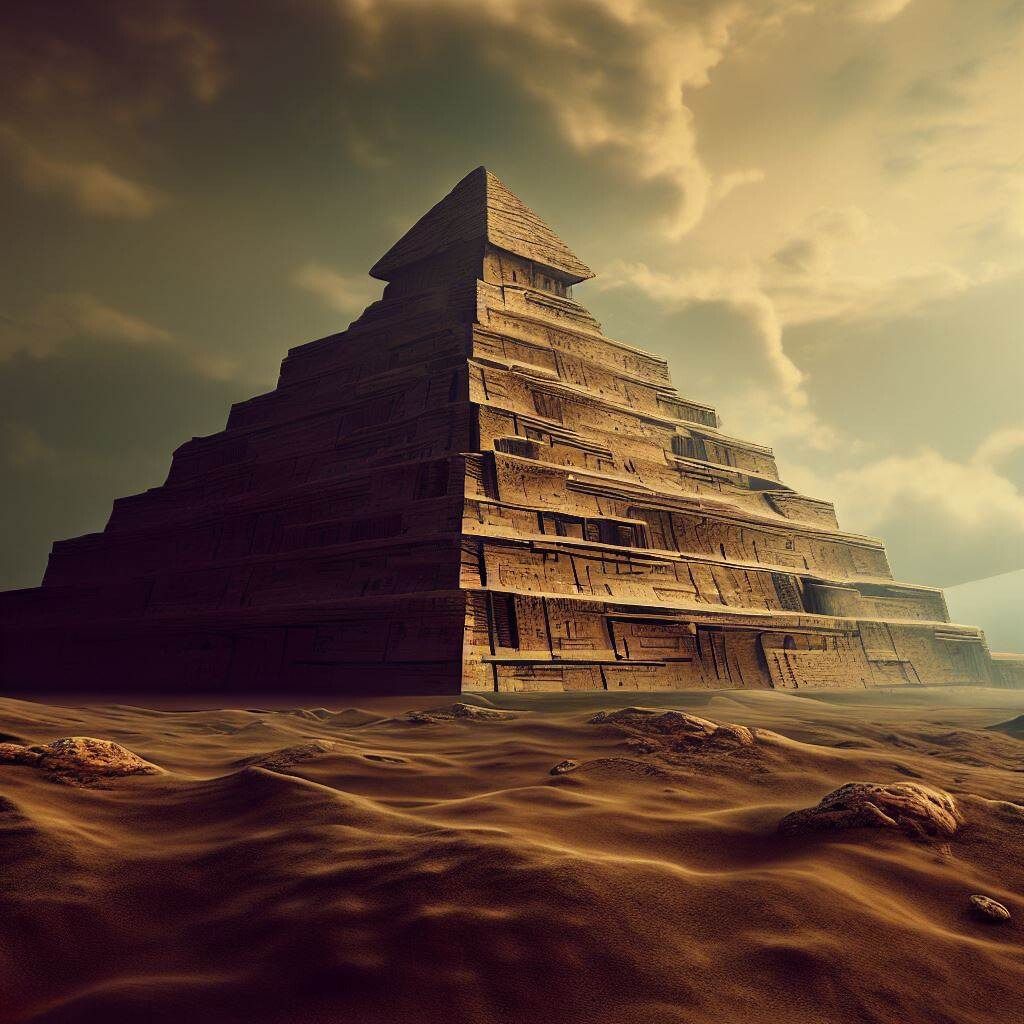
Some experts argue that grave robbers might have stolen the mummies and treasures. However, the lack of evidence of intrusion, combined with the absence of any remnants of the mummification process, makes this theory less convincing.
Others have suggested that the Great Pyramid may have served a purpose other than a burial site. The architectural design, the alignment with celestial bodies, and the use of advanced mathematical concepts indicate a purpose more complex and profound than mere burial.
Additionally, the chambers within the Great Pyramid are oddly unadorned. Unlike other royal tombs, which are decorated with intricate hieroglyphics and art, the Great Pyramid’s interior is stark and minimal. This lack of decoration further supports the notion that the Pyramid may not have been intended as a tomb.
The mystery of the missing mummies has sparked interest in alternative theories about the Great Pyramid’s purpose. From being a colossal energy machine to a repository of ancient wisdom, these ideas offer a more complex picture of what this magnificent structure might represent.
In conclusion, the absence of mummies in the Great Pyramid is more than a historical oddity; it’s a vital clue that challenges conventional wisdom.
It forces us to rethink what we know about the Great Pyramid and opens up the possibility that The Great Pyramid Wasn’t For The Pharaohs but rather a product of an advanced ancient civilization with knowledge and purposes far beyond our current understanding.
The absence of mummies invites us to explore, question, and marvel at the complexities of our ancient past.

Alignment with Stars and Astronomical Principles
Perfectly aligned with celestial events. Beyond the understanding of the time? Was it a creation of a more advanced civilization?
The Great Pyramid’s alignment with stars and adherence to astronomical principles is another strong argument that supports the claim that The Great Pyramid Wasn’t For The Pharaohs.
This alignment is not only intriguing but also highlights the advanced understanding of astronomy that existed during the time of its construction.
The Great Pyramid of Giza is aligned with incredible precision to the cardinal points of the compass. This alignment is not a mere coincidence but a reflection of deep astronomical understanding.

One of the most notable alignments is with the star Sirius, which was of significant importance in ancient Egyptian cosmology. The Pyramid’s descending passage points directly to this star, symbolizing a connection between the Earth and the heavens.
Moreover, the three pyramids of Giza align with the three stars of Orion’s Belt. The ancient Egyptians associated the constellation Orion with Osiris, the god of the afterlife, and this alignment might be more than a symbolic representation.
The precision of the alignment with Orion’s Belt is astonishing, considering the lack of advanced tools during that time. It suggests a profound understanding of star positions, movements, and geometry, which goes beyond mere burial purposes.
The Great Pyramid’s base is aligned to the true north with an error of only 3/60th of a degree. Such precise alignment to the true north indicates knowledge of Earth’s axial precession, a complex astronomical phenomenon that was supposedly unknown at the time.
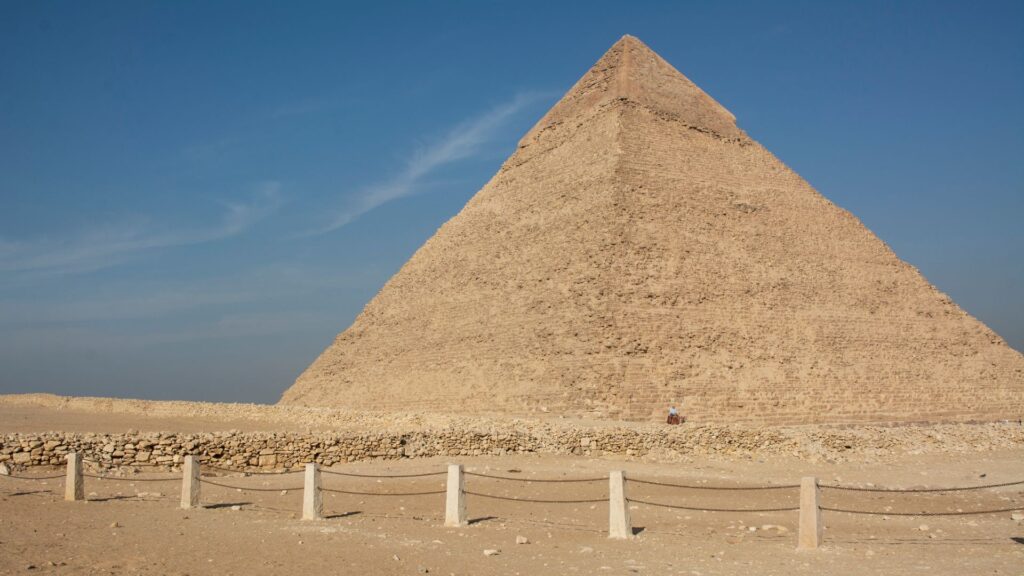
The Great Pyramid also encodes the value of Pi (π) and the Golden Ratio (Φ), both of which are fundamental constants in mathematics and geometry. Incorporating these principles into the design of the Pyramid points to an advanced civilization capable of complex mathematical computations.
The use of solar and lunar cycles in the Pyramid’s design also raises questions about its purpose. Some theories suggest that the Pyramid might have been an astronomical observatory or a giant calendar reflecting the movements of celestial bodies.
In conclusion, the alignment with stars and adherence to astronomical principles in the Great Pyramid’s design is more than a marvel of ancient engineering. It’s a testament to an advanced civilization with profound knowledge of the cosmos.
These alignments are not random but carefully planned and executed, transcending the conventional understanding of the Pyramid as a tomb.
The mysteries surrounding these alignments continue to captivate researchers and enthusiasts alike, providing compelling evidence that The Great Pyramid Wasn’t For The Pharaohs but a structure that speaks to civilization with wisdom far beyond their time.
The precision, complexity, and purpose behind these alignments invite us to look at the Great Pyramid not just as a monument but as a key to unlocking the secrets of an ancient civilization that knew the stars.
If the idea of advanced ancient civilizations intrigues you, don’t miss our comprehensive exploration of one of the most mysterious subjects: Ancient Advanced Civilizations in Antarctica: Unveiling the Icy Enigma. This investigation delves into the theories and evidence that suggest a once-thriving culture beneath the frozen landscape.
Similar Structures Across Civilizations
Pyramids in various ancient cultures. Shared architecture and purpose. Was there a globally advanced civilization?
The Great Pyramid Wasn’t For The Pharaohs – this statement becomes even more compelling when we analyze the similar structures found across various ancient civilizations. These similarities are not mere coincidences but possibly an indication of shared knowledge or inspiration that transcended geographical boundaries.
Pyramids and similar monumental structures are found in various parts of the world. From the pyramids of Mexico and Central America to the ziggurats of Mesopotamia, the resemblance is striking.
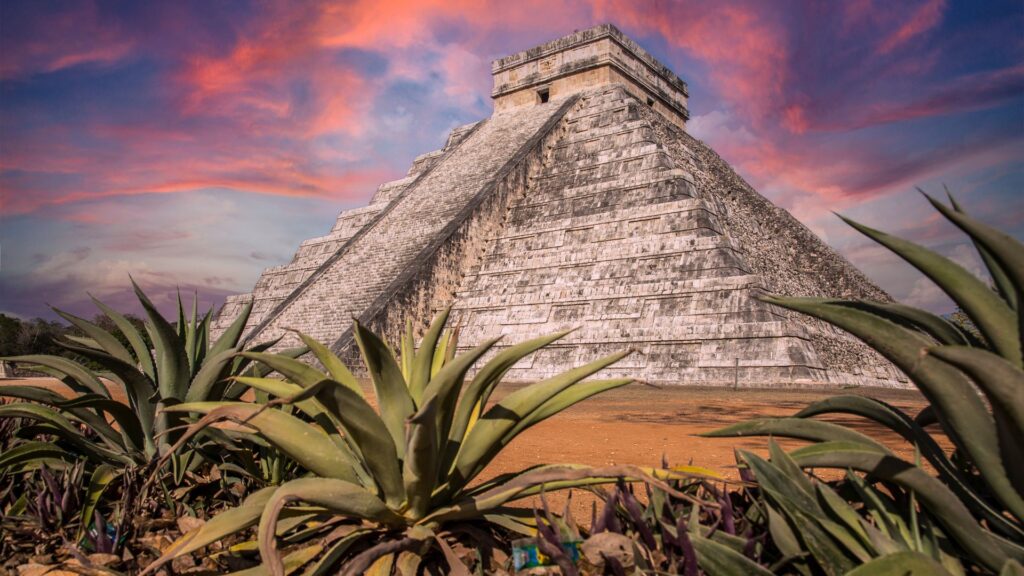
The Maya, Aztec, and Inca civilizations all have pyramids that share architectural elements with the Great Pyramid. Despite being separated by oceans and vast distances, these structures exhibit parallel designs and construction techniques.
The ziggurats of Mesopotamia, although different in form, still bear a resemblance in purpose and symbolism. These stepped towers served as religious sites and observatories, much like how some believe the Great Pyramid functioned.
Even in far-off places like Cambodia, the famous Angkor Wat temple complex displays architectural brilliance. Its central tower alignment with certain celestial bodies echoes the Great Pyramid’s alignment with the stars.
Some researchers argue that these similarities across civilizations point to a shared ancient wisdom. This wisdom, perhaps carried by a highly advanced ancient civilization, could have spread across continents, influencing various cultures.

The construction techniques used in these pyramids were highly advanced for their time. Despite the lack of modern machinery, the builders achieved precision and symmetry that continue to baffle modern engineers.
The function of these structures also goes beyond mere burial sites or religious symbols. Many of them align with celestial bodies, and some even incorporate complex mathematical constants, like the Great Pyramid.
The global occurrence of these structures might suggest a common source of inspiration or guidance. Could it be that these civilizations were influenced by the same advanced ancient civilization, sharing knowledge and techniques?
For those interested in delving deeper into the mysteries of history and exploring the idea that technologically advanced civilizations may have existed before known human history, be sure to read our eye-opening article: Did Advanced Civilizations Exist Before Humans? This piece provides compelling insights and evidence that challenges conventional understanding.
In conclusion, the similarities in pyramid structures across various ancient civilizations present a compelling case that The Great Pyramid Wasn’t For The Pharaohs. These global connections hint at a shared heritage, transcending cultural and geographical boundaries.
The precise engineering, alignment with astronomical principles, and symbolic meanings found in these structures reflect an advanced understanding that goes beyond local traditions.
These commonalities invite us to explore the idea that an ancient advanced civilization might have influenced the construction of these monumental structures.
The cross-cultural similarities in architecture and purpose lead us to a path of inquiry that could unlock secrets of an ancient world where the marvel of the Great Pyramid was but one part of a global phenomenon.
The Great Pyramid Wasn’t For The Pharaohs: Alternative Theories

The Pyramid as an Observatory
A tool for tracking celestial events? Evidence of advanced knowledge. Could an ancient civilization be behind this?
The Great Pyramid’s alignment with the stars has fascinated historians and researchers for centuries. But the notion that “The Great Pyramid Wasn’t For The Pharaohs” takes us on an intellectual journey to explore the Pyramid as something more than just a tomb. Could it have been an observatory? Let’s delve into this intriguing possibility.
The Great Pyramid’s precise alignment with the cardinal points of the compass is remarkable. This alignment suggests a deep understanding of astronomy and the Earth’s geography by the builders.
Its base is aligned with an accuracy of just a few degrees to the true north. This precision would require a high level of astronomical knowledge and technology.
The so-called “air shafts” inside the Great Pyramid have been a subject of much debate and research. Some scholars believe these shafts point directly at significant stars, such as Sirius and the Orion constellation.

The alignment with Orion’s Belt, in particular, has fascinated researchers. The three pyramids of Giza appear to replicate the alignment of the three stars in Orion’s Belt, hinting at a possible celestial connection.
The ancient Egyptians referred to Orion as Osiris, the god of rebirth and afterlife. Could this alignment signify a spiritual or cosmological belief system?
Astronomical alignments are not exclusive to the Great Pyramid but are found in other ancient structures as well. This recurring theme strengthens the argument that these buildings might have served as observatories.
The mathematical and geometrical precision of the Pyramid’s construction indicates an advanced knowledge of the cosmos. These traits are beyond mere architectural achievements and hint at the builders’ deep insight into celestial mechanics.
The notion that the Great Pyramid functioned as an observatory also ties into the belief in an ancient advanced civilization. This civilization, with its profound astronomical wisdom, could have influenced or guided the construction of the Great Pyramid.
If the topic of ancient, possibly advanced civilizations on Earth intrigues you, don’t miss our in-depth exploration on this fascinating subject. Discover archaeological finds, historical records, and theories that challenge our understanding of human history in our article: Exploring the Possibility of Ancient Civilizations on Earth. It’s a thrilling journey into the unknown that may reshape how you view our past.
In conclusion, the possibility that the Great Pyramid served as an observatory is more than just a fascinating idea. It’s an insight into a sophisticated ancient civilization with knowledge far beyond its time.
The precise alignments, advanced construction techniques, and connections with celestial bodies present a compelling argument that The Great Pyramid Wasn’t For The Pharaohs. Rather, it could have been part of a network of ancient observatories, reflecting an unparalleled understanding of the universe.
The Great Pyramid as an observatory invites us to rethink our understanding of ancient wisdom and technology. By viewing it in this light, we open new avenues for research and exploration, unveiling a history that might have been shaped by a civilization far more advanced than we ever imagined.
The Pyramid as a Spiritual Center
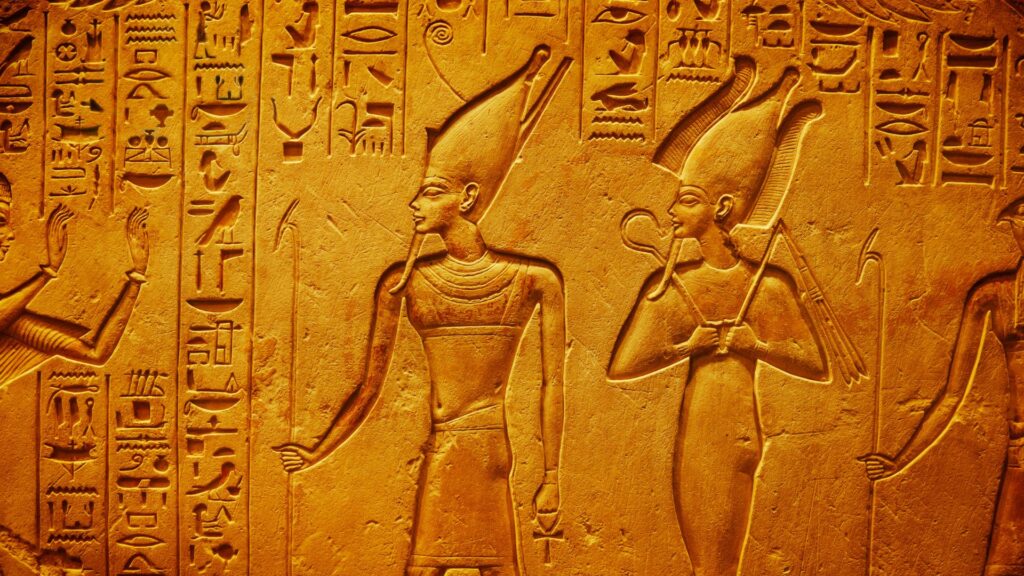
Aligning with spiritual practices. A civilization with deep understanding? The Great Pyramid Wasn’t For The Pharaohs but for something greater.
“The Great Pyramid Wasn’t For The Pharaohs,” a statement that carries significant weight, especially when we consider the Great Pyramid as a spiritual center.
What evidence do we have that the Pyramid transcends the mere mortality of a burial tomb and represents something more profound? Let’s examine this captivating perspective.
The Great Pyramid’s alignment with celestial bodies suggests more than just a scientific fascination. It reflects a connection between Earth and the cosmos, a belief deeply embedded in many ancient cultures.
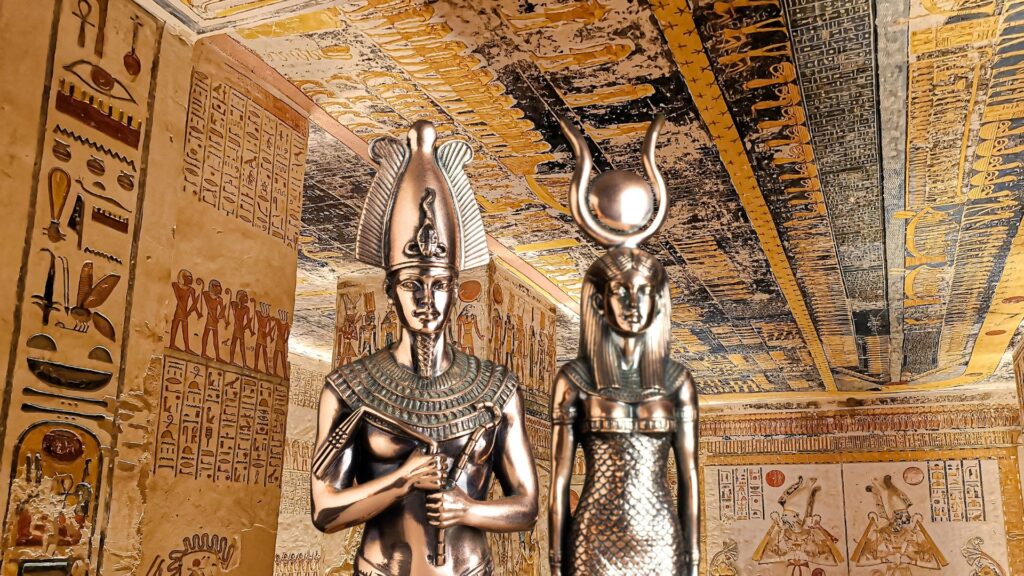
The ancient Egyptians were known for their religious beliefs and spiritual practices. They revered the stars and viewed celestial events as divine manifestations influencing their daily lives.
The Great Pyramid’s precision in aligning with specific stars is no coincidence. It may represent a cosmic connection, linking the pharaohs with the heavens and the divine.
The internal chambers and passages of the Pyramid are equally intriguing. Some theories suggest they were designed to guide the pharaoh’s soul to the afterlife, a celestial journey to join the gods.
Sacred geometry is evident in the Great Pyramid’s construction. The Golden Ratio, a mathematical principle found in nature, is embedded within the Pyramid’s proportions, symbolizing universal harmony.
The concept of the Great Pyramid as a spiritual center resonates with various spiritual traditions. Meditation and spiritual practices have been associated with pyramid-shaped structures in different cultures.
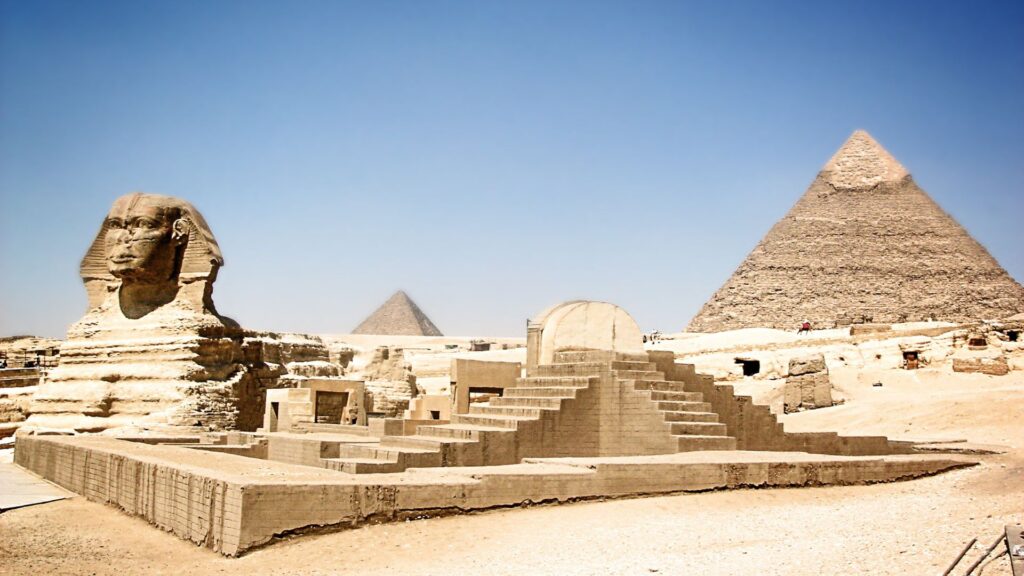
The sound properties inside the Great Pyramid are unique. They seem to create a resonating chamber, potentially used for rituals or spiritual ceremonies, amplifying the spiritual experience.
The mysterious voids and hidden chambers within the Pyramid still elude understanding. Could they have had a spiritual purpose, or hold the key to unlocking more profound spiritual truths?
Many visitors to the Great Pyramid describe a transformative experience. The energy, ambiance, and architecture evoke feelings of awe and spiritual connection.
By viewing the Great Pyramid as a spiritual center, we recognize its multidimensional role. It becomes a bridge between the earthly realm and the divine, a place of worship, contemplation, and spiritual growth.
In closing, the hypothesis that the Great Pyramid served as a spiritual center aligns with various historical, architectural, and experiential evidences. It paints a picture of a civilization deeply connected with spiritual wisdom, where the Pyramid served as a conduit to higher realms.
The understanding that “The Great Pyramid Wasn’t For The Pharaohs” as merely a tomb, but as a spiritual center, enriches our appreciation of this ancient wonder. It invites us to explore beyond the physical structure, delving into the mystical and spiritual dimensions that lie hidden within its stones.
The Great Pyramid as a spiritual center presents a fresh and insightful narrative, one that resonates with timeless wisdom. It provides a glimpse into an ancient civilization that embraced the cosmos, the divine, and the human soul, embodying a holistic understanding of existence that still speaks to us today.
Have you ever considered the possibility that advanced civilizations may have existed before humans? The concept isn’t merely the stuff of science fiction. In fact, the Silurian Hypothesis raises this very question, offering a thought-provoking look into Earth’s pre-human history. Dive into the compelling evidence and scientific debate in our detailed examination: Did Advanced Civilizations Exist Before Humans? Silurian Hypothesis Explored. This insightful article provides a comprehensive look at this tantalizing idea, exploring theories, evidence, and the ongoing conversation among scholars.

A Monument to Human Unity
Symbolizing unity and knowledge. Could this be the work of a global civilization? The Great Pyramid transcends mere tombs.
The statement “The Great Pyramid Wasn’t For The Pharaohs” extends its implications to an inspiring and profound aspect: the Great Pyramid as a monument to human unity.
How can a structure, often associated with a single civilization’s rulers, be considered a universal symbol of human connection? Let’s unravel this perspective.
The Great Pyramid’s construction is an unprecedented feat of human collaboration. Thousands of workers from different regions, backgrounds, and social strata united to achieve a common goal.
The alignment of the Great Pyramid with celestial bodies is not unique to ancient Egypt. Similar principles are found in other ancient civilizations, suggesting a shared understanding and universal wisdom.
The utilization of the Golden Ratio in the Pyramid’s design connects it with nature and mathematics across cultures. It symbolizes a universal order, reflecting a shared human experience.
If you’re intrigued by the idea of pre-human advanced civilizations, don’t miss our exploration on this fascinating subject. Check out Exploring the Enigma of Pre-Human Advanced Civilizations: Unraveling Ancient Mysteries and Possibilities for more insights.
The Great Pyramid has endured for millennia as an icon of human achievement. It transcends cultural, geographical, and temporal boundaries, resonating with people from all walks of life.
The structure’s architectural brilliance is a testament to human ingenuity, creativity, and collaboration. It signifies what humanity can achieve when working together, irrespective of differences.
The symbolism and spiritual significance of the Pyramid resonate with various religious and spiritual traditions. It serves as a unifying element, bridging beliefs and fostering mutual respect and understanding.
The Great Pyramid as a travel destination fosters global connection. Visitors from around the world gather, sharing experiences and insights, cultivating a sense of global community.
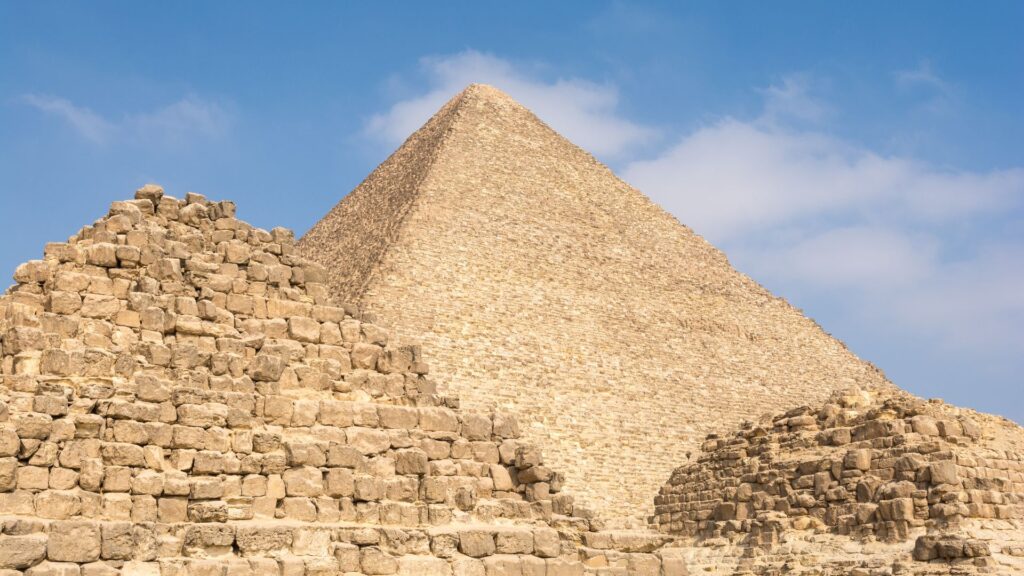
The continued fascination and study of the Great Pyramid by scholars, researchers, and enthusiasts worldwide forge intellectual and cultural bonds. It encourages dialogue, exploration, and appreciation of diverse perspectives.
The idea of the Great Pyramid as a monument to human unity is not merely a poetic notion. It is rooted in its design, purpose, symbolism, and the experience it offers to those who encounter it.
The understanding that “The Great Pyramid Wasn’t For The Pharaohs” in a limited historical context but serves as a testament to human unity broadens its relevance. It elevates the structure from an ancient relic to a living symbol of connection, cooperation, and shared human values.
In a world often divided by differences, the Great Pyramid stands as a reminder of our common humanity. Its timeless presence encourages us to recognize our shared heritage, aspirations, and potential.
The Great Pyramid as a monument to human unity is a perspective that transcends traditional views. It invites us to look beyond the stones, to see a reflection of ourselves, our interconnectedness, and our collective triumph.
By embracing the Great Pyramid as a universal symbol, we honor the essence of what it means to be human. We celebrate our capacity to create, connect, and transcend, illuminating a path toward a more harmonious and united world.
“The Great Pyramid Wasn’t For The Pharaohs” becomes more than a historical assertion. It is a call to recognize our shared legacy, our inherent unity, and the unbreakable bonds that tie us all together in the grand tapestry of human existence.
For a deeper look into the fascinating world of ancient advanced civilizations, be sure to explore our comprehensive guide on Unveiling the Enigma of Ancient Advanced Civilizations.
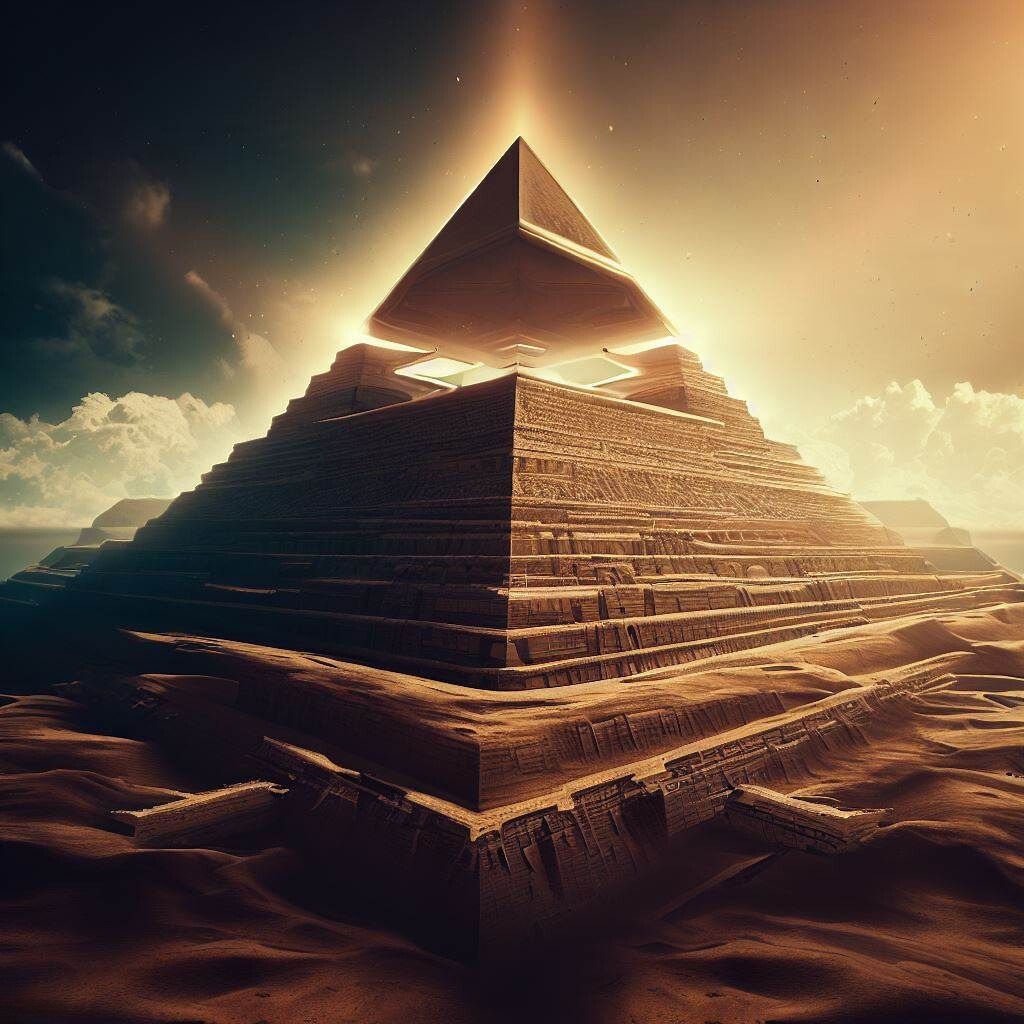
Conclusion: Unraveling the True Purpose
The Great Pyramid Wasn’t For The Pharaohs. It may be a beacon from an advanced civilization. The evidence is intriguing. The mystery is alive. Our understanding continues to grow.
As we draw our exploration to a close, the assertion that “The Great Pyramid Wasn’t For The Pharaohs” opens up new dimensions of thought and understanding. The Great Pyramid, a marvel of human innovation, is no longer confined to being merely a tomb or monument for a specific ruler. Its purpose and meaning expand far beyond that. Let’s summarize the broader perspectives we’ve unveiled.
- A Symbol of Human Collaboration and Unity: The Great Pyramid stands as a beacon of human cooperation, uniting people from various backgrounds, cultures, and beliefs. It’s a monument that transcends boundaries, promoting a shared human experience.
- An Astronomical Observatory and Spiritual Center: Its alignment with stars and celestial principles reveals a profound connection with the universe. This alignment, coupled with its role as a spiritual hub, shows an advanced understanding of the cosmos and human spirituality.
- A Reflection of Ancient Engineering and Mathematical Brilliance: Its construction techniques and the use of the Golden Ratio showcase the Pyramid as a testament to human creativity and mathematical genius. It serves as evidence of an ancient civilization’s advancement.
- A Connection Across Civilizations and Time: Similar structures and principles found across different civilizations hint at a global interconnectedness. The Pyramid’s endurance through millennia resonates with people across generations, fostering a sense of continuity and connection.
- A Living Symbol of Human Potential: Its very existence reminds us of what humans can achieve when united in purpose. It continues to inspire, educate, and connect people, making it a living embodiment of human potential.
The idea that “The Great Pyramid Wasn’t For The Pharaohs” is not just a challenge to conventional historical narratives. It’s an invitation to delve deeper, to seek the universal truths that the Great Pyramid embodies. It encourages us to look beyond the physical structure to uncover the wisdom, unity, and potential that it represents.
As we continue to explore and learn from this magnificent monument, we may find that its true purpose is not confined to one definition or interpretation. Perhaps its purpose is ever-evolving, mirroring our own growth and understanding.
Maybe the Great Pyramid’s essence lies in its ability to be many things to many people, a multifaceted jewel reflecting our collective human experience.
By acknowledging that “The Great Pyramid Wasn’t For The Pharaohs” in a restricted sense, we open doors to endless possibilities and insights. We recognize it as a timeless symbol that continues to teach, inspire, and unite. It becomes a mirror of humanity, reflecting our past, shaping our present, and guiding our future.
In embracing this broader view, we honor the Great Pyramid as not just an ancient artifact but as a living legacy. It stands as a reminder of our capacity to create, to connect, and to transcend. Its lessons are not confined to history books but resonate in our daily lives, calling us to recognize our shared heritage, our inherent unity, and our boundless potential.
The Great Pyramid, in this light, is not just a structure but a symbol, a teacher, a guide, and a friend. It’s a bridge that connects us to ourselves, to each other, and to the cosmos.
The journey that began with the statement “The Great Pyramid Wasn’t For The Pharaohs” doesn’t end here; it merely sets the stage for continued exploration, reflection, and growth. The true purpose of the Great Pyramid, it seems, is as vast and magnificent as the structure itself.
If you’re intrigued by the mysteries surrounding ancient structures like the Great Pyramid and want to delve deeper into the secrets of lost civilizations and ancient cataclysms, you might find our comprehensive exploration on Lost Civilizations and Ancient Cataclysms to be an enlightening read.
FAQ
Q1: If the Great Pyramid wasn’t for the Pharaohs, what was its primary purpose?
A1: The Great Pyramid’s purpose extends beyond being a mere tomb for the Pharaohs. It is believed to have served as a symbol of human collaboration, an astronomical observatory, a spiritual center, and a reflection of ancient engineering and mathematical brilliance. Its multifaceted purpose resonates with various aspects of human life and understanding.
Q2: How does the Great Pyramid’s alignment with stars support the theory that it wasn’t built for the Pharaohs?
A2: The Great Pyramid’s precise alignment with celestial bodies such as Orion’s Belt showcases an advanced understanding of astronomy. This alignment goes beyond mere aesthetics or symbolism related to royalty and hints at its function as an astronomical observatory. It reflects a broader connection with the universe, transcending the traditional view of the pyramid as a Pharaoh’s tomb.
Q3: Are there other structures similar to the Great Pyramid in different civilizations, and what does this imply?
A3: Yes, similar pyramidal structures exist across various civilizations, such as the Mayans, Mesopotamians, and more. This similarity suggests a global interconnectedness and shared understanding that transcends geographical and cultural boundaries. It supports the notion that the Great Pyramid’s purpose was part of a more comprehensive, universal human experience.
Q4: What evidence supports the idea that the Great Pyramid served as a spiritual center?
A4: The Great Pyramid’s design, interior chambers, and alignment with celestial bodies have led scholars to believe it served spiritual purposes. Ancient texts and symbolic representations found within the pyramid point to its use in rituals and spiritual practices. Its intricate architecture and celestial connections indicate a profound understanding of spirituality and cosmic principles, aligning with the belief that the Great Pyramid Wasn’t For The Pharaohs in a narrow sense.
Q5: How does the idea that “The Great Pyramid Wasn’t For The Pharaohs” impact our understanding of ancient civilizations?
A5: Embracing the concept that “The Great Pyramid Wasn’t For The Pharaohs” expands our view of ancient civilizations. It reveals them as advanced societies with deep understanding in various fields such as mathematics, astronomy, engineering, and spirituality. This multifaceted view challenges conventional historical narratives and offers a richer, more nuanced appreciation of our ancestors’ wisdom and achievements.
